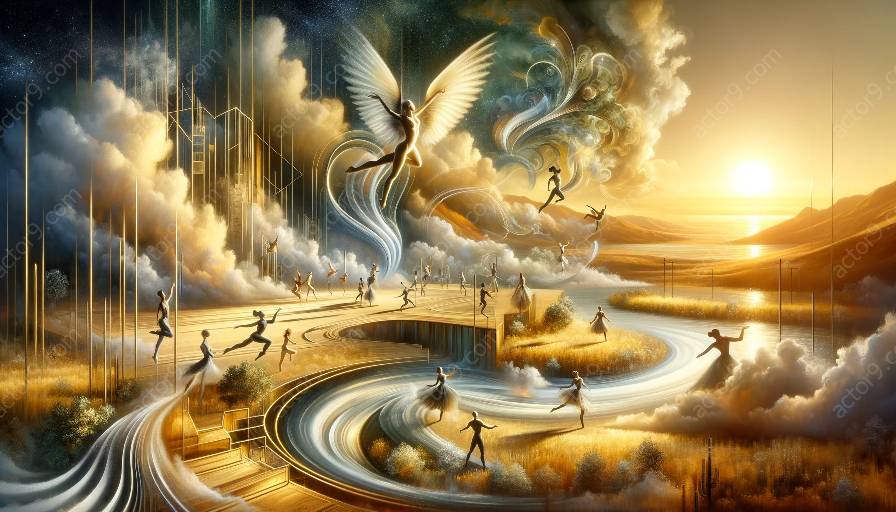Physical theatre and circus arts intersect in a world of creativity and expression, offering a platform for performers to convey stories and emotions through movement and acrobatics. This engaging fusion of art forms has opened doors for innovative techniques, including the incorporation of mask work into circus performances from a physical theatre perspective.
The Intersection of Physical Theatre and Circus Arts
Physical theatre is a form of performance that emphasizes the use of physical movement and expression as a means of storytelling. It often transcends language barriers, relying on the body as the primary instrument for communication and narrative. Similarly, circus arts are known for their breathtaking displays of acrobatics, aerial performances, and feats of strength, creating a spectacle that captivates audiences worldwide.
The convergence of physical theatre and circus arts embraces a shared emphasis on physicality, expression, and storytelling. This intersection provides a fertile ground for experimentation and exploration, inviting artists to push the boundaries of traditional performance techniques.
Understanding Mask Work in Physical Theatre
Mask work has played a significant role in the realm of physical theatre, offering performers a transformative tool to embody characters and evoke emotional depth through non-verbal communication. Masks serve as an extension of the performer's body, allowing for the portrayal of archetypal figures, fantastical creatures, and complex emotions.
From neutral masks that provide a blank canvas for expression to expressive masks that amplify specific emotions, the versatility of mask work offers a rich tapestry for artists to weave their narratives. Integrating mask work into physical theatre requires a profound understanding of movement, gesture, and the dynamics of physical expression.
Seamless Integration of Mask Work into Circus Performances
When exploring the incorporation of mask work into circus performances from a physical theatre perspective, several compelling opportunities arise. The marriage of mask work and circus arts presents an avenue for performers to infuse their acrobatic feats with nuanced characterizations and heightened storytelling.
Through the strategic use of masks, circus performers can transcend the boundaries of traditional physicality, delving into the realm of emotional storytelling while executing gravity-defying acts. The juxtaposition of the extraordinary physical prowess of circus arts with the subtlety of masked performances creates a captivating juxtaposition that resonates with audiences on a profound level.
Embodying Characters through Masked Acrobatics
Imagine a high-flying aerialist adorned with a mask that embodies the spirit of a mythical being, soaring through the air with a sense of otherworldly grace and power. This integration of mask work into circus performances constructs a multidimensional theatrical experience that blurs the lines between the physical and the emotive.
The use of masks can also lend a sense of mystique and intrigue to circus acts, inviting audiences into a world where the boundaries of reality are transcended. Whether through the manipulation of expressive masks during ground-based performances or the mesmerizing fusion of acrobatics and masked storytelling in aerial acts, the potential for innovation is boundless.
Engaging Audiences with Depth and Emotion
By incorporating mask work into circus performances from a physical theatre perspective, artists have the opportunity to engage audiences on a deeper, more emotive level. The fusion of physical prowess and the evocative power of masks creates a captivating synthesis of sensory experiences that resonates with spectators.
Through this integration, circus performances become more than mere displays of skill and athleticism—they become immersive narratives that unfold through the language of movement and masked expression. Spectators are transported into a realm where the visual spectacle of circus arts intertwines with the poignant storytelling of physical theatre, resulting in an unforgettable exploration of human emotion and endeavor.
Conclusion
The incorporation of mask work into circus performances from a physical theatre perspective represents a captivating convergence of artistic disciplines. This dynamic approach not only expands the creative horizons of performers but also offers audiences a richer, more multifaceted experience. By embracing the intersection of physical theatre and circus arts, artists can chart new territories of storytelling, expression, and innovation, bringing forth a renaissance of performance that transcends conventional boundaries.




































